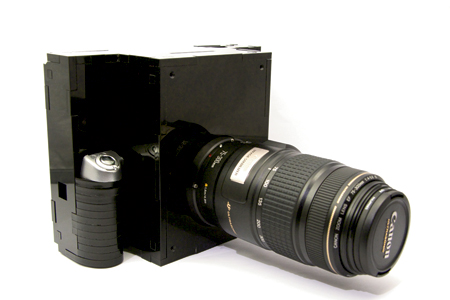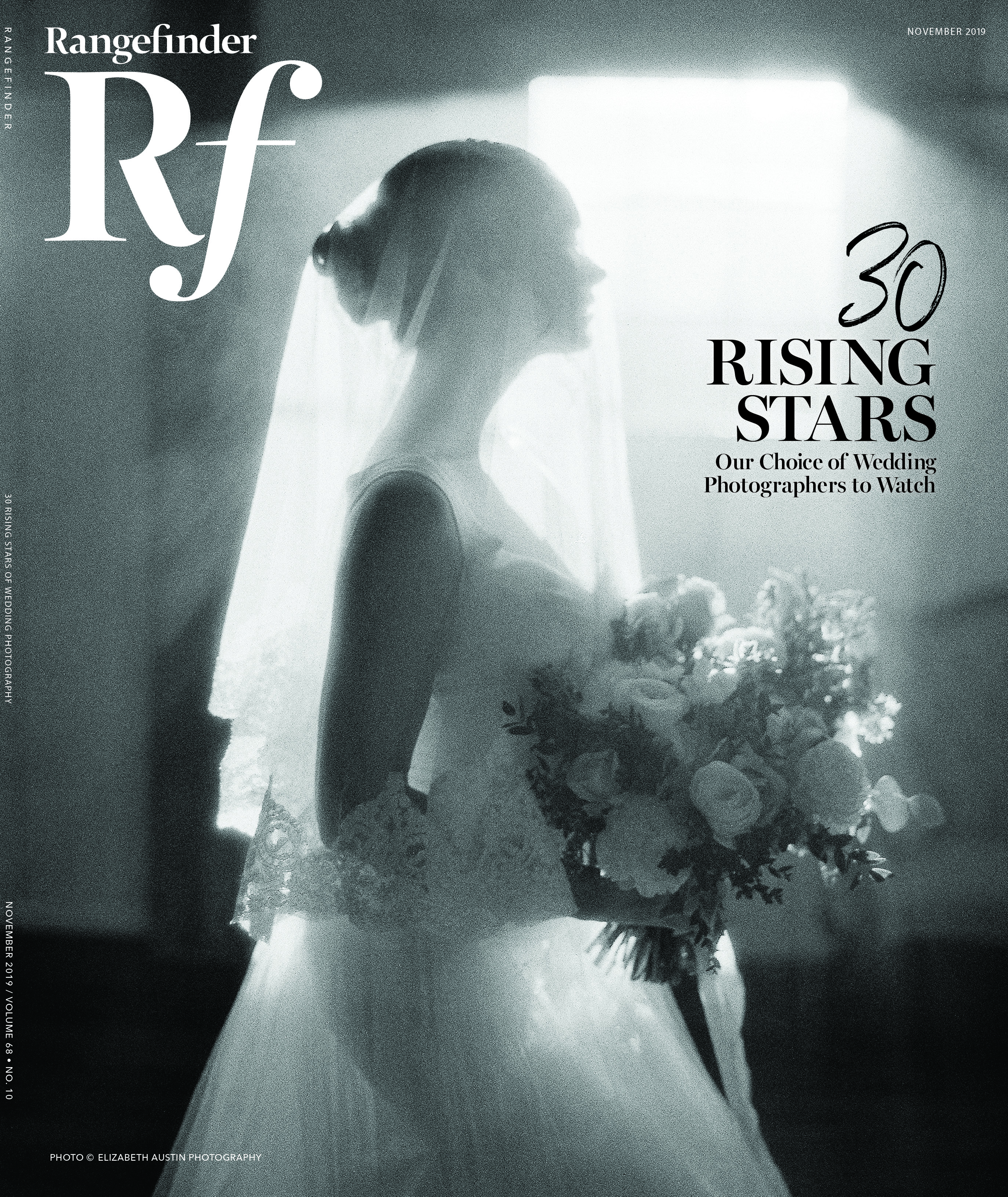Now that the megapixel race seems to be over for most photographers, camera manufacturers will need to become more creative in developing new features and quality improvements if they want to sell more camera bodies.
Incremental improvements in quality or just adding more pixels on a sensor are not going to be enough to encourage photographers to upgrade their equipment. We’ve probably reached the point now where photographers can keep a current DSLR for several years and not have to upgrade for improved image quality.
Of course, there is going to be continued sensor and lens development but many of the improvements and new features are going to come from software rather than hardware development. Currently, the software that processes the data captured by sensors and controls camera functions is proprietary. It’s true that camera manufacturers offer software development kits (SDKs) for developers but they are generally limited to processing RAW files and controlling camera settings such as shutter speed, aperture, etc.
Nowadays a digital camera is more a computer than it is a mechanical device. Imagine what it would be like if a camera’s “operating system” was like that in a computer? Outside developers could create features for users to vastly expand the camera’s capabilities. It’s worth noting that hackers have been modifying digital cameras for sometime but they are limited in what they can do.
If you want an idea of what the future might hold, take a look at the number of photographic apps that are already available for Apple’s iPhone. It only has a 3-megapixel sensor with a fixed lens and no flash but it has an operating system that can be accessed by software developers. Just imagine if it was as easy for a developer to create apps for a DSLR?
In the computer world many of the best applications are open source, meaning they are available free of charge and have many programmers working on them. Stanford University has taken this idea and is developing an open-source camera. It may not be the first attempt at this, but it does appear to be the first that might lead to interesting developments for pro photographers as they are using 35mm lenses.
The Frankencamera, as it is affectionately named, is still in its very early stages of development but the faculty hope to have prototyping kits available next year for other researchers to work with. If you check out the Stanford website you can read more details and see some of the things the Frankencamera can do. It’s also significant to note that the companies supporting Stanford’s effort include Nokia, Adobe, Kodak and Hewlett-Packard. No sign of a manufacturer of a pro camera though.
Officially, the name given for this type of photography is computational photography. Initially the term referred to pictures generated by a computer but it is likely to become a more widely used term as photographs are created after a camera has captured the RAW data off a sensor.
There are other groups developing solutions in this arena. How about a flash system that can mask part of an image as the picture is taken so subjects close to a camera are lit with the same amount of light as those further away. Another development is one where accurate focusing is performed in the camera after the image is captured not before. Imagine that!
Even if an open-source camera does not make it out of research labs, it will surely create more competition by creating awareness of what can be accomplished, hence spurring manufacturers to develop their own commercial solutions. If we’re lucky they may even open up a camera’s electronics to outside developers.
New Point-and-shoot Cameras
Meanwhile, back to near term reality, there have been a number of new cameras introduced in the past couple of months in the usual build-up to the coming holiday season. Although none of the cameras are professional cameras per se, many of the features and some pricing points undoubtedly provide some insight into the future of DSLRs.
Nikon was the first to reveal its new cameras. The Coolpix S1000pj features a built-in LED projector for displaying images and the Coolpix S70 has an OLED rear screen with finger-touch controls.
More recently Canon unveiled its fall lineup. The EOS 7D has an 18-megapixel CMOS sensor and becomes the highest resolution APS-C size camera on the market. On the other hand, the new PowerShot G11 goes in the opposite direction with a 10-megapixel sensor replacing the 14.7-megapixel sensor in the G10. The G series of cameras have been a long-time favorite point-and-shoot camera for professionals, so it is encouraging to see Canon put image quality, especially for low light, ahead of the number of megapixels.
Although DSLRs with APS-C sensor are more than adequate for the majority of shooters there is still demand for full-frame camera bodies. Sony’s new A850 is a less expensive version of the A900. It features the same 24.6-megapixel full-frame sensor but the retail price is just under $2000. This makes it $6000 less expensive than the Nikon D3X, which has a variation of the same sensor. Unless Sony is taking a heavy loss on every camera it sells, it seems Sony is showing how overpriced the high-end cameras from Nikon and Canon have become.
Sony’s new amateur cameras include a new sensor that produces less noise in low-light situations. More interesting though is a new accessory that works with several bodies that include smile detection. It is the Party-shot Personal Photographer. The unit sits on a tripod and turns the camera into a robotic camera that can be left unattended. When it sees a face, it composes and snaps a photo. It can pan through 360 degrees and tilt up to 24 degrees as it searches for potential photographs to snap. It might be usable as a remote camera at weddings!
Samsung’s new CL65 compact camera includes Bluetooth and WiFi connectivity as well as GPS.
Fujifilm has dropped out of the DSLR market but it continues to introduce good point-and-shoot cameras. Their newest camera though has a new twist—it’s a 3D camera. The timing might be right, as 3D movies have made a comeback.
Panasonic’s new Micro Four Thirds 12.1-megapixel Lumix DMC-GF1 looks just as good as the Olympus EP-1 on paper. Some would say it is better as it includes a built-in flash and an optional electronic viewfinder that works with all lenses.
At the other end of the “amateur” market, Leica has unveiled the M9, it’s latest rangefinder camera that sports a full frame 18-megapixel CCD sensor. Although it will cost a hefty $8000 when it goes on sale, it will appeal to wealthy Leica fans. At a slightly less expensive level ($2200) the Leica X1 has a 12.2-megapixel APS-C size CMOS sensor and a fixed 16mm (24mm equivalent) lens.
I’m sure I have missed some features on other new consumer cameras—but you get the idea. While many of these features may end up being duds it will nonetheless be fascinating to see which ones percolate up into pro cameras.
For every person who says, “I want that feature,” there’s going to be another who will adamantly say, “No way, I don’t want that cluttering up my camera.” The beauty of many of these features is that they don’t cost very much to add and they can be turned on or off and even developed further by third party developers if they can get into the camera’s operating system.
It’s hard to imagine just what feats the Canon EOS-1D Mark VI or the Nikon D6 or the Olympus E-P4 will be capable of in the future.
Olympus E-P1 Review
Photo enthusiasts and many professionals have long bemoaned the fact that no major camera manufacturers have incorporated sensors from a DSLR into a compact camera. It’s been a strange omission.
Until now, Sigma was the only company to do this with its DP1 and DP2 cameras, but they have had limited success. A year ago at Photokina, Olympus and Panasonic introduced the new, awkwardly named, Micro Four Thirds format. Panasonic introduced the G1, which is a miniaturized DSLR without a mirror mechanism while Olympus showed a mock-up of a point-and-shoot camera. It finally went on sale as the E-P1 a few months ago.
I have been playing with one for a few weeks and found it has a lot going for it. First off, the image quality is excellent. It has the same 12.1-megapixel Live MOS sensor found in the E30 DSLR and produces almost identical-looking images. The camera has interchangeable lenses and can use big lenses from the E-system range with an adaptor.
I tried the camera with the 14–42mm f/3.5–5.6 zoom (28–84mm equivalent) that is included in a kit that sells for $800. While in use the lens protrudes about three inches, making it considerably bigger than in a pocket camera. However, when not in use it can be retracted so it only sticks out 13/4 inches, making the camera with lens much more compact.
In use I was expecting the performance of a DSLR as well as the image quality. However, the focusing is slow and in continuous-focus mode it hunted so much that I was never able to use it. [Editor’s note: Just as we went to press Olympus issued a downloadable firmware update to address the focusing issues and John Rettie reports that it has indeed taken care of the autofocusing problems.]
Manual focus is okay but trying to see clearly on the rear LCD screen in daylight is difficult. It is only a 230,000-dot screen and although it is possible to quickly zoom in to check focus, that’s not very practical if you are trying to get a grab shot.
The ergonomics are okay although anyone with big fingers will find the buttons too small. The grips on the right-hand side are not raised enough, making it difficult to hold the camera with one hand. Also, the designers certainly slipped up in placing an important thumb wheel right where you hold the camera. It is almost impossible to avoid turning this while using the camera leading to the possibility of accidentally adjusting settings.
There is no optical viewfinder, although one can fit an external optional viewfinder for use with the 17mm lens. But then one could not use an external flash as it uses the hot-shoe. The camera does not have a built-in flash, which is another shortcoming in my view.
Where the camera does shine is in its software features. It includes the well liked art filters found in the E-30 and it is possible to produce slide shows with sound and perform some simple editing in the camera. It also produces good HD (720p) video with excellent stereo sound capture.
Overall the E-P1 is nicely made with a brushed aluminum finish. It produces good still images and video clips. It shows potential but I found it a little frustrating to use for more than occasional thoughtful shots. Ironically, it’s too big for using as a grab-and- shoot pocket camera and its operation is too clumsy, if that’s the right word, as a part-time replacement for a DSLR.
The potential is certainly there, and I congratulate Olympus for introducing this camera—I am sure the E-P2 will address many of this camera’s shortcomings. For example if it had a large OLED touch screen on the back it’d be easier to frame and the physical buttons could be removed. With that I could live without an optical viewfinder, but I’d still ask for a built-in flash.
John Rettie is a photojournalist who resides in Santa Barbara, CA. He has been using a camera as a professional for 39 years, a computer for 29 years, and has combined his knowledge of both for the past 16 years. Readers can contact him directly by e-mail at [email protected].





